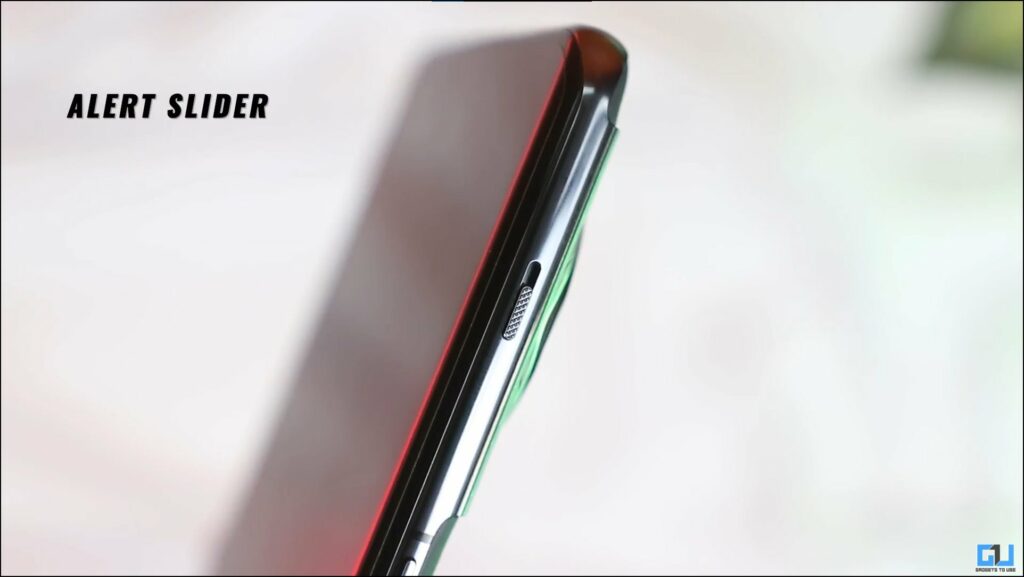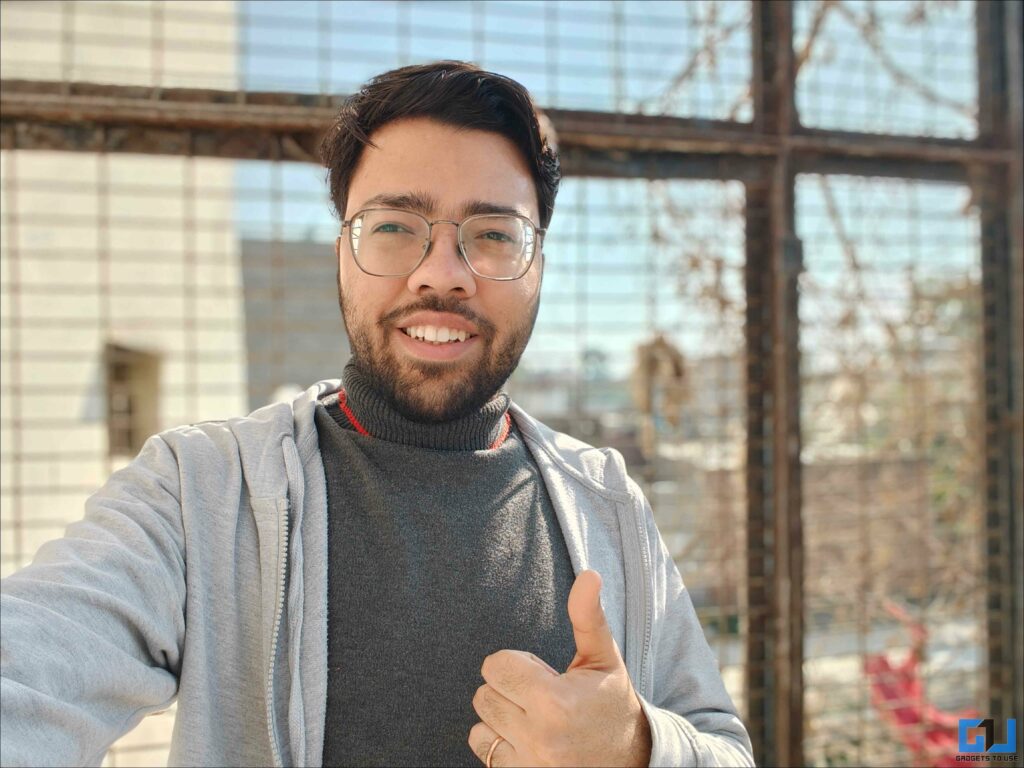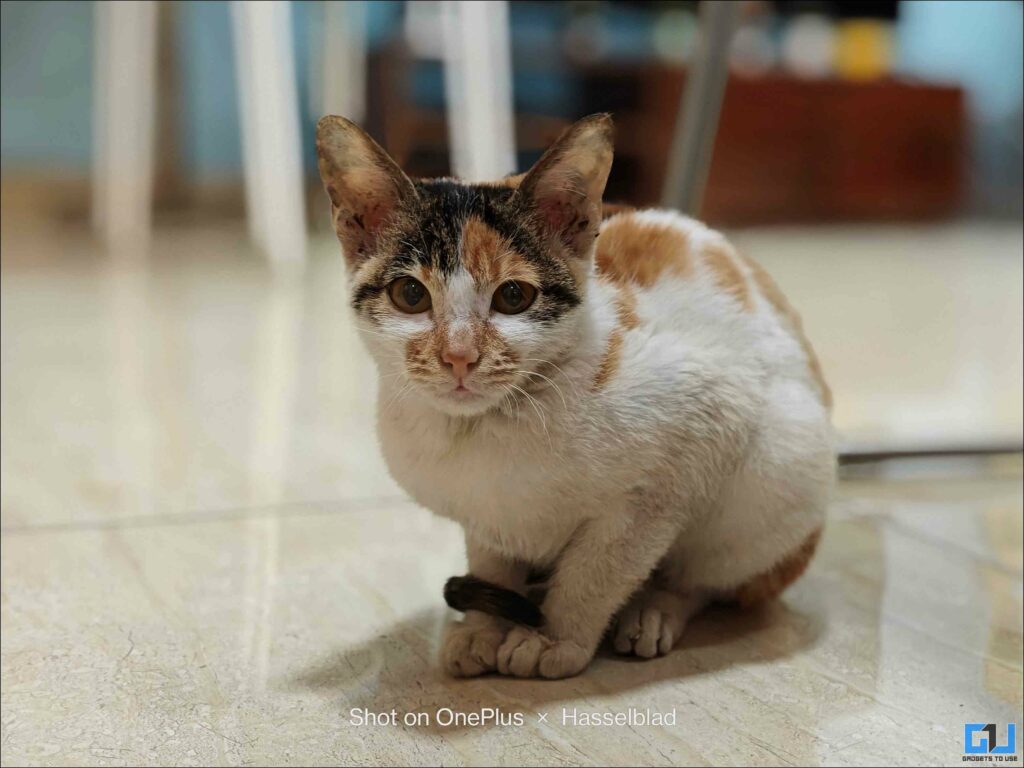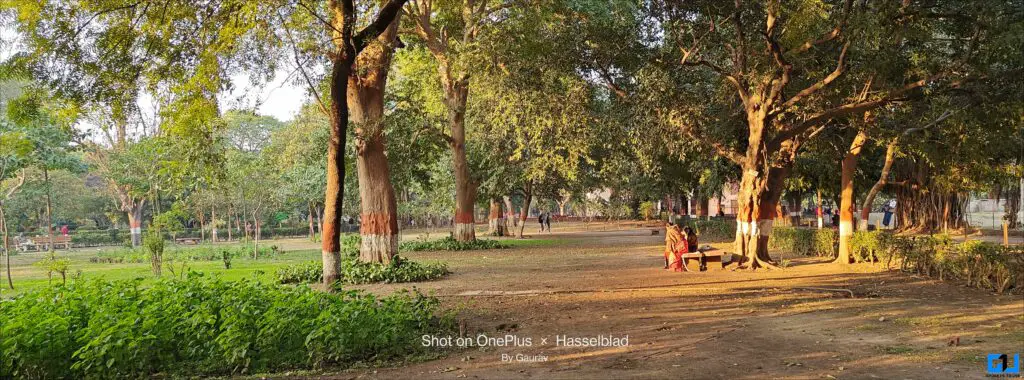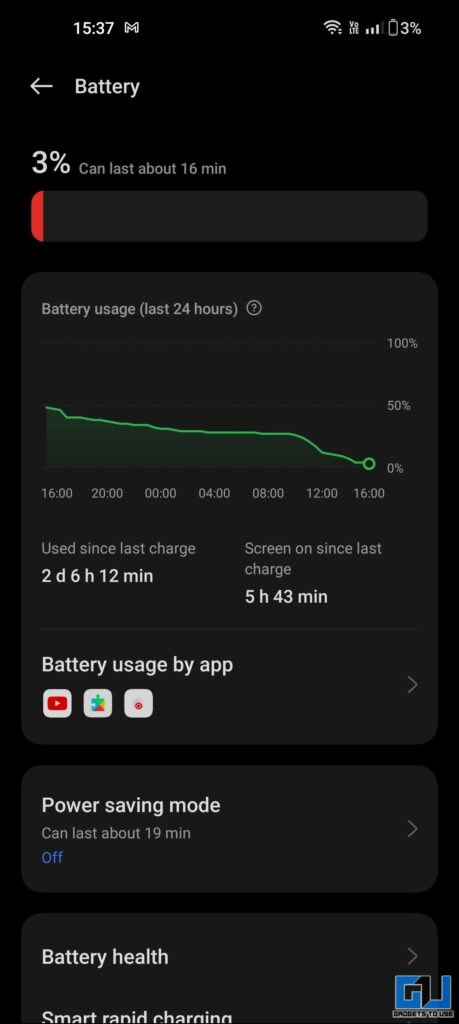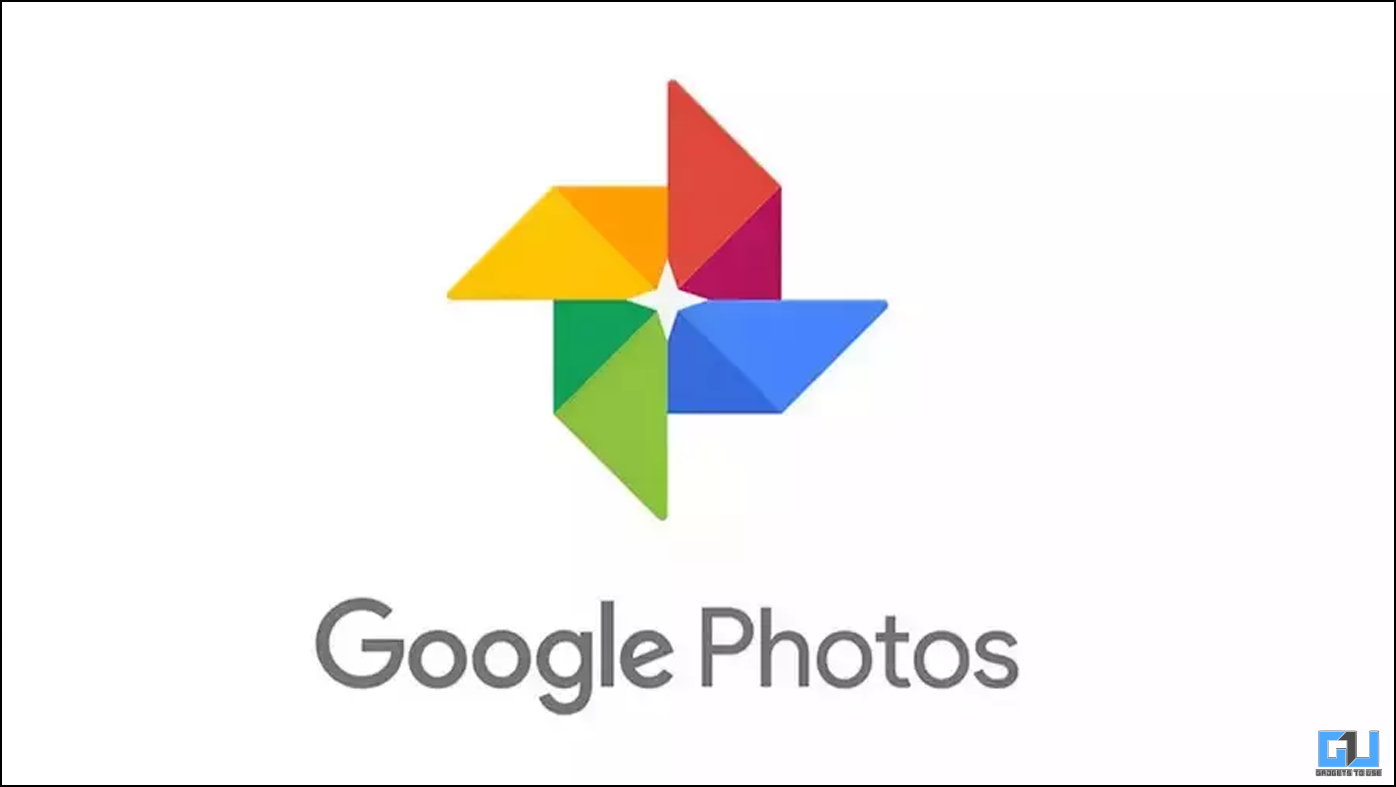Quick Answer
- But this year, with the OnePlus 11 as the next iteration of their Flagship, the lack of “Pro” branding can be a risky call to take, and a strange marketing move, to entice OnePlus 10 Pro users, for the upgrade.
- The design language is similar to the OnePlus phones I’ve used in the past, like the OnePlus 10 Pro and OnePlus 10T 5G, where the camera looks like a big gas stove-like design.
- Both the frame and the camera decor are made of one-piece steel, blending smoothly with the rear glass, giving the phone a unique character, and making it stand out and easily recognisable in a public place.
OnePlus’s flagship phone for H1 2023, the OnePlus 11 was announced with the OnePlus 11R (Review), OnePlus Buds Pro 2 (Review), and the Q2 Pro TV. The OnePlus 11 comes equipped with the latest Snapdragon 8 Gen 2, which is the best from Qualcomm till date. After using it for few weeks, today I’ll be sharing my thoughts about it. Has OnePlus worked on it after the OnePlus 10T 5G’s criticism from fans and experts? Let’s dive into my OnePlus 11 5G review, to find out what has improved, and see whether the old OnePlus is back or not.
OnePlus 11 5G Review
This year OnePlus seems to be confused as they have ditched the “Pro” branding for their flagship phone since last year we had the OnePlus 10 Pro, which I really enjoyed using except for the slow camera shutter. But this year, with the OnePlus 11 as the next iteration of their Flagship, the lack of “Pro” branding can be a risky call to take, and a strange marketing move, to entice OnePlus 10 Pro users, for the upgrade. I have divided my OnePlus 11 5G review into segments, which you can access from the table of contents. Now, without any further ado, let’s dive into the review.
Package Contents
The OnePlus 11 comes in two color configurations 8 GB RAM + 128 GB Storage, priced at INR 56,999 ($699 in the US) and 16 GB RAM + 256 GB Storage priced at INR 61,999 ($799 in the US). The package of OnePlus 11 5G, comes in the signature Red color and includes the following contents:
- OnePlus 11 5G
- Soft Rubber Protective Case
- 100W SuperVOOC Power Adapter
- USB A to USB C cable
- Welcome Letter
- OnePlus Stickers
- Quick Start Guide
- Safety Guide
- SIM Ejection PIN
Build Quality and Ports
The OnePlus 11 5G comes in a glass sandwich design, where the back supports Gorilla Glass 5, and the front is protected by Gorilla Glass Victus. The design language is similar to the OnePlus phones I’ve used in the past, like the OnePlus 10 Pro and OnePlus 10T 5G, where the camera looks like a big gas stove-like design. Both the frame and the camera decor are made of one-piece steel, blending smoothly with the rear glass, giving the phone a unique character, and making it stand out and easily recognisable in a public place.
After the criticism from the media, and community users, OnePlus has made some changes in the design. As the phone is now less wide compared to OnePlus 10 Pro, and OnePlus 10T, which were not much comfortable to hold. This reduced width of the OnePlus 11 makes it easy to hold, even though it weighs 205 grams. Also, now I don’t need to stretch my thumb to reach the far end of the screen, which was a pain on the OnePlus 10 Pro.
Another change in design is the return of the OnePlus’s signature Alert Slider on the right side, which is followed by the Power key. Carrying over the flat top edge from OnePlus 9RT, this time we get a mix of flat top and bottom, while the right and left side of the phone is slightly curved. This makes the device slim, with 8.53mm thickness, giving a modern look, yet ensures it is easy to hold and sturdy to carry around.
You get the following ports and buttons on the OnePlus 11 5G:
- Top Flat Edge – Secondary Microphone, Additional vent for Secondary Speaker
- Left Curved Side – Volume Rockers
- Right Curved Side – Power Switch, Alert Slider
- Bottom Flat Edge – Primary Microphone, Primary Speaker, USB 2.0 Port, Dual Nano SIM Card Tray
To bring this flagship offering at a competitive price, OnePlus has cut some corners like the lack of any IP certification in India (as the US variant does come with IP64 certification). Similarly, another cut is made on the USB port, where the OnePlus 10 Pro 5G had the USB 3.1 port, the OnePlus 11 has USB 2.0 port. This might not sound a big downgrade to layman, but will hamper the data transfer speeds on the OnePlus 11.
Display
The OnePlus 11 5G, boasts a 6.7″ QHD+ (3216 pixels x 1440 pixels) Fluid AMOLED Display, with an adaptive refresh rate of up to 120Hz and a 1000Hz touch sampling rate. With a pixel density of 525 PPI, the content and text on this screen appear sharp and crisp, just like the OnePlus 10 Pro, which also had the same pixel density and screen size. The display panel is upgraded to LTPO 3.0 standard, compared to LTPO 2.0 on the OnePlus 10 Pro. This upgraded panel is supposed to go as low as 1Hz on Always on Display, while it is hard to practically test it, it went down to 40Hz in our test.
The 10-bit color display on the OnePlus 11 5G is capable to stream HDR 10+ and Dolby Vision Content on Netflix, where the colors look punchy with deep blacks. You can further customize the color profile of the display under the device settings and choose between Vivid, Natural, and Pro, along with the color temperature. I personally prefer the Vivid profile and kept it throughout my usage.
With a peak brightness of 1300 nits, this panel is easily legible, while traveling in a subway or outdoors under harsh sunlight. The automatic brightness sensor didn’t take much time to adapt to my use case. Even though it was legible in direct sunlight, however, it’s not the brightest display when compared to other phones in the market.
Audio
In terms of audio experience, the OnePlus 11 5G comes with dual stereo speakers which OnePlus called “Reality Speakers”, supports Dolby Atmos. I found this dual speaker setup, to be pretty loud considering how slim the phone is. When I compared it to the Moto Edge 30 Fusion and Xiaomi 12 Pro, the OnePlus 11 audio was much louder, with rich bass to fill the room and clear vocals. In a nutshell, the OnePlus 11 sounds the best among the three.
Hardware
OnePlus 11 5G is powered by the latest Snapdragon 8 Gen 2 mobile platform, fabricated on the 4nm process. This is much improved over the 8 Gen 1, as Qualcomm states, it delivers 35% faster performance and 40% better power efficiency, 25% faster graphics rendering, with a 60% performance-per-watt boost for sustained AI inferencing.
The Snapdragon 8 gen 2 is an octa-core mobile platform, where the cores are structured as follows:
- 1×3.2 GHz Cortex-X3
- 2×2.8 GHz Cortex-A715 (Performance cores)
- 2×2.8 GHz Cortex-A710 (Performance cores)
- 3×2.0 GHz Cortex-A510 (Efficiency cores)
In terms of thermals, I didn’t notice any heating issues during our testing, thanks to the 3685 mm2 VC area, which is the largest on a OnePlus phone ever. This is paired with a 5673 mm2 mid-frame layer of graphene and a dedicated layer of crystal graphene.
Benchmark Tests
To test this monster of a chip and I ran several benchmark tests, and got the following results:
Antutu Benchmark – It scored a whopping 10,31,073 on Antutu Benchmark, without breaking a sweat. During the test, the temperature went up by 4.2 degrees celsius, and a 6% battery drop was observed. The full breakdown of the Aututu score is as follows.
- CPU score:1,73,696
- GPU score: 5,35,106
- Memory score: 1,97,371
- UX score: 1,25,900
CPU Throttling Test – Similar to other 8 Gen 2 phones, the OnePlus 11 also throttles the RAW CPU power to keep the thermals under control. During the 15 min CPU throttling test, it throttled down to 75%, where the battery temperature went up from 27.8 degrees celsius to 38.5 degrees celsius, and the CPU temperature went up from 34.3 degrees celsius to 45.7 degrees celsius. With a battery drop from 39% to 30%.
Geekbench 6 CPU Test – In Geekbench 6 CPU test it scored 1522 on single-core, and 4249 on multi-core, in normal mode. The single-core score is above Galaxy Z Flip 4, and Xiaomi 12S Ultra, and the multi-core score is above Galaxy Z Fold 4, and Vivo X90. The Geekbench 6 GPU compute score came out to be 8482, which stands in between Galaxy S23, and Galaxy S23 Plus. However, if you solely believe in high numbers then the high-performance mode can get you even better results.
3D Mark Test – To test the graphics performance of the OnePlus 11’s, I run 3D Mark’s Wild Life Extreme Test, and it scored 3583, with an average 21.5 frames. In Wild Life Extreme Stress Test, the stability score was 22%.
Gaming
On the GPU front, it comes with Adreno 740, with support for ray tracing on Snapdragon 8 Gen 2, giving a more realistic experience with better shadows and reflections. As per Qualcomm the following games support ray tracing on 8 Gen 2:
- Rainbow Six Mobile
- Justice Mobile
- Tower of Fantasy
I tested a bunch of games on the OnePlus 11 like the Genshin Impact, COD, and PUBG, and all three were handled well by the phone. There’s a dedicated 90 fps mode for PUBG, which locks the graphics on lite. This paired with the O haptics motor, makes the overall gaming experience life-like on the OnePlus 11 5G. If you crave for a premium haptic experience, OnePlus flagship phones are surely a good option, and OnePlus 11 is no exception to this.

Software
The OnePlus 11 5G comes with Oxygen OS 13, out of the box, based on Android 13, which feels fast and snappy. The OnePlus fan in me is not impressed with the UI, because of the ColorOS visual elements, adding those extra touches and swipes to clear notifications. It does not feel and look like the signature OnePlus’s Oxygen OS, which was close to vanilla Android UI. It is still feature-rich with the app lock, hidden apps, and quick launch. With some new additions like the smart slider, simple mode, and more, but it’s not the same OnePlus that we used to like.
In terms of stability and performance, the ColorOS codebase does feel much improved and stable compared to Oxygen OS. There isn’t any bloatware, not even the Amazon app, except for Netflix, which is a welcome move from OnePlus. One major thing I didn’t like much is the accidental pocket mis touch prevention, which appeared half the time I tried to access quick settings, so I chose to disable it.
OnePlus has released a statement that it will provide 4 years of Android OS upgrades, and 5 years of security patches to the OnePlus 11 5G. This means it will get upgrades till Android 17, and security patches till 2028, that’s the highest standard for Android phones matching Samsung’s flagships. During the testing phase, it has been receiving updates every month, and the overall UI smoothness has improved over time.
Network and Communication
OnePlus 11 5G supports 13 5G Bands namely (N1, N3, N5, N7, N8, N20, N28A, N38, N40, N41, N66, N77, N78), making it ready for all three major Indian telcos: Airtel, Jio, and VI. However, the 5G connectivity is dicey, as I was able to test Jio 5G and even got a download speed of 500Mbps, but later on, 5G was disabled on Jio.
This issue was later fixed with an update, but often I have to restart the phone, to get 5G reception and use the Jio 5G Welcome Offer at my home and office. I haven’t experienced any such issues on Xiaomi 11T Pro, which I carry with me.
Though after 2 software updates, the issue is now completely gone, and I’m not facing any network issues. It is not a good experience, to see OnePlus taking such a long to fix connectivity issues on a flagship phone.
In terms of other connectivity options, there’s no compromise, as it supports NFC, WiFi 7 (based on region, and legislation), Bluetooth 5.3, and dual-band GPS. In terms of calling, I didn’t face any issues during my daily use, except for underground metro travel as it does lose the signal a few times.
Camera
OnePlus has worked on the camera front this time, as the camera results impressed all our team members. The Hasselblad camera science does capture the skin tones with right colors, as it should be. There are three sensors on the rear namely: 50MP (IMX890) which utilizes both OIS and EIS, paired with a 48MP ultrawide sensor (IMX581), and a 32MP 2x Telephoto (IMX709). On the Video front, it can record up, to 8k 24fps, which does have some focusing issues. But when switched to 4K, we did not experience any such issues.
The front is a 16MP left-aligned punch-hole camera (IMX471), which can record up to 1080p videos with EIS. It was able to handle HDR well, but you might notice the HDR lacking in portrait videos recorded with the front camera.
It comes with the third iteration of the OnePlus and Hasselblad partnership, which is now much improved. As the Hasselblad camera science camera tuning handles colors well, and there’s no major color shifting between lenses. I specifically liked, how well it performs in portrait shots, thanks to AI Sensing cameras on Snapdragon 8 Gen 2, as the OnePlus 11 5G stimulates, the XCD 3.5/30 lens for 1x portrait shots, and XCD 2.8/65 for 2x portrait shots. You can check the camera samples to get a better idea of the camera performance of the OnePlus 11 5G.




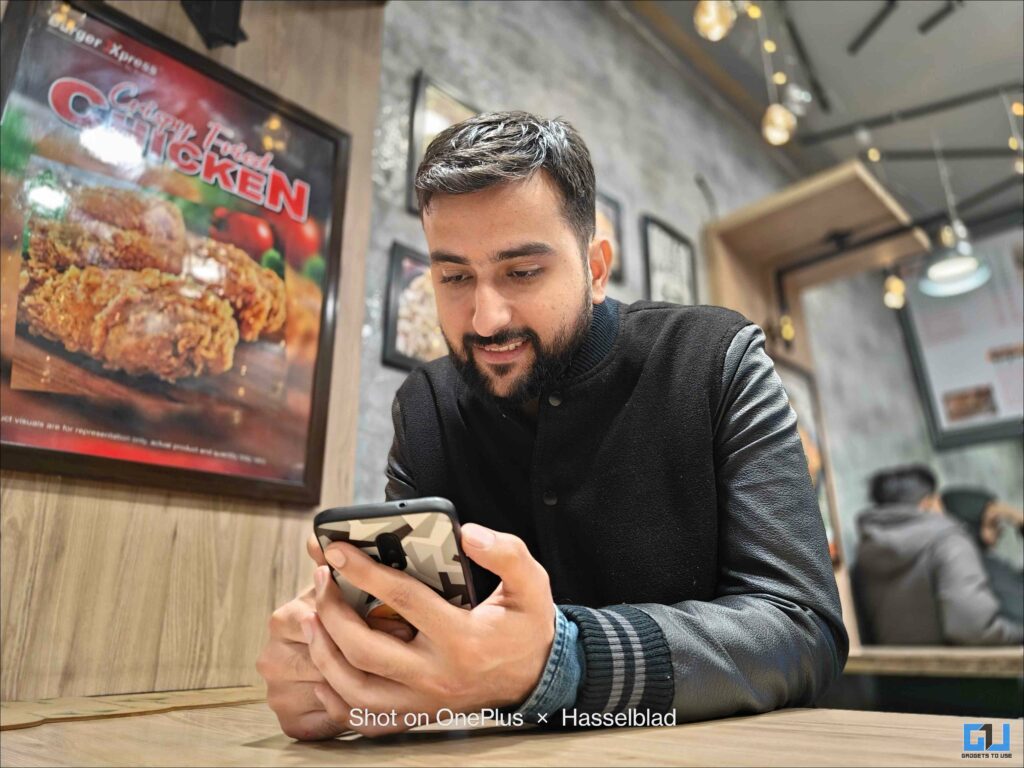
Battery
Fueled by a dual-cell 5,000mAh battery, inside the slim 8.53mm chassis, weighing just 205 grams without the case. During my usage period, I could easily pull approximately 5 hours and 45 minutes of screen time, with heavy use. With controlled usage, it lasted for almost 2 days and 16 hours, whereas the screen on time was stretched to 6 hours and 45 mins. This was achieved when the resolution was set at QHD+ coupled with a 120Hz refresh rate. The test scenario included moderate gaming, underground metro travel with low network reception, media consumption over Bluetooth, and an active mobile hotspot from OnePlus 11.
With the resolution set to FHD+, it can easily last for more than two days of moderate usage.
As for the charging, during my usage, the 100W SuperVOOC power adapter, provided in the box was able to juice up the 5000 dual-cell from 10-100% battery in just 22 mins. If OnePlus could have bundled a PD charger, that would have been great, but it’s a standard 100W charger. The lack of Wireless charging also feels like a missed corner at this price.
Final Thoughts
For the starting price of INR 56,999 (USD 699), OnePlus has done a pretty good job, of bringing back its Flagship Killer image, where flagships from Google, Samsung, and Apple are touching nearly USD 1000. Some corners have been cut to bring the pricing down, like No IP Rating in India, the Omission of a PD power adaptor, and the lack of Wireless charging. But it comes with a great set of cameras, and top-tier performance, in a beautifully designed chassis.
It’s good to see OnePlus going aggressive at the competition, but there are still some things like the UI fixes and 8K video optimizations, etc. which needs more refinement. Nonetheless, I would say OnePlus is kind of back but still has some way to go, to make a perfect flagship phone. Do let me know what you think about OnePlus 11 5G, will you pick it up as your daily driver? Stay tuned to GadgetsToUse for more such reviews, and how-tos.
Also, Read:
- Redmi Note 12 5G Review: Perfect Budget Phone With Imperfect Camera
- Google Pixel 7 Pro QnA Review: The Pro Stuff
- Google Pixel 7 QnA Review: Answering What Matters!
You can also follow us for instant tech news at Google News or for tips and tricks, smartphones & gadgets reviews, join GadgetsToUse Telegram Group or for the latest review videos subscribe GadgetsToUse YouTube Channel.


